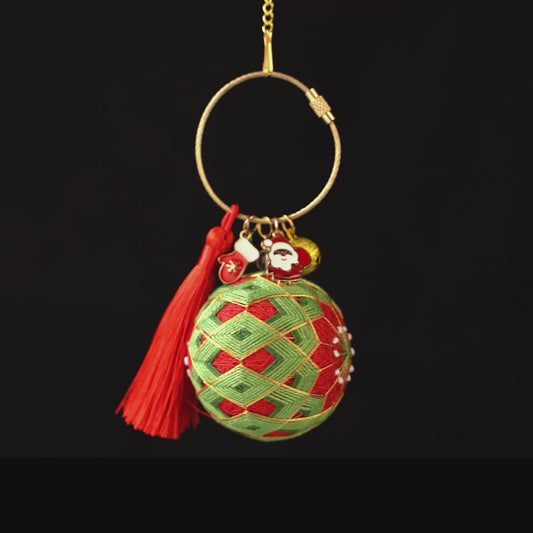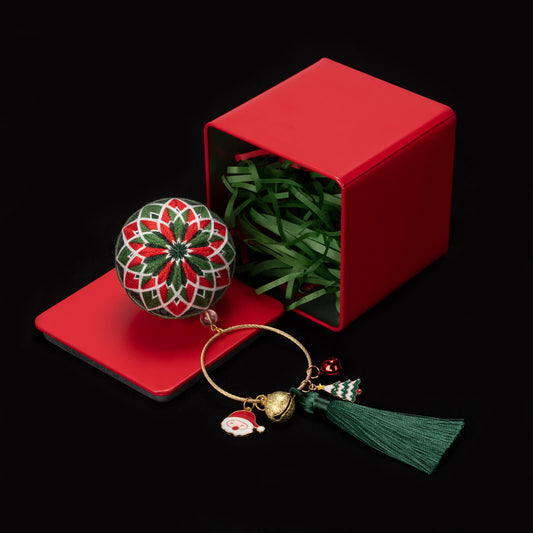Temari ball - A traditional art craft for Christmas ornaments
Temari ball is a traditional handicraft that is made by wrapping thread around a ball and making it through techniques such as embroidery and weaving. It originated in Keju in the Tang Dynasty of China, was introduced to Japan around the 7th century, and gradually evolved into an art form where people embroidered various patterns and patterns on balls. In Japanese, "tetsu" means "handball" because it was originally used as a game ball.
The Temari ball is not just a toy, it also symbolizes blessings and good luck. In Japan culture, Temari is often seen as a symbol of the New Year and used to convey good wishes.

Features of Temari ball:
Material: Traditional handheld balls are usually wrapped around a spherical core with cotton or silk thread and then embroidered.
Patterns: The patterns of the hand-held balls are very diverse, and can be simple geometric patterns, as well as complex landscapes or flower and bird patterns.
Skill: Making a handball requires exquisite embroidery and sewing skills.

The process of making a Temari ball is relatively complex and usually includes the following steps:
Material Preparation: Use old fabrics, threads, and padding.
Shape shaping: Cut and roll the cloth into a spherical shape.
Decoration: Wrap and embroider various patterns with colored threads to make them beautiful and full of personality.

The use of the temari ball
Game: Traditionally, tebal was used as a game, similar to the modern Keju.
Decorations: Due to their beautiful appearance, handball balls are also used as decorations, hanging indoors or as gifts for others.

Why is temari ball so popular?
Artistry: The process of making a handball is full of artistry and creativity.
Cultural heritage: Handball carries a rich traditional Japan culture.
Relaxation: Making a handball can help people relax and develop patience and focus.


























